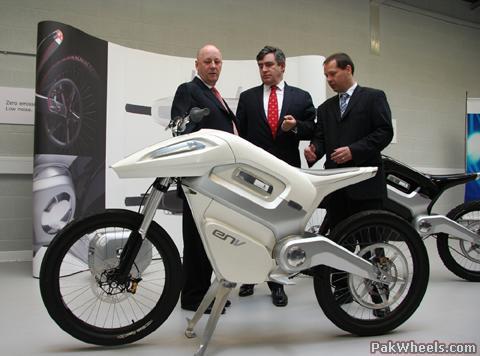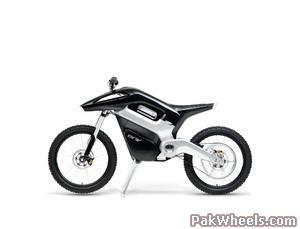

Then British company Intelligent Energy, which is relocating its headquarters to Los Angeles, announces what it is calling "the world's first purpose-built fuel cell motorbike." The motorbike has a compact 1 kilowatt fuel cell -- called the CORE -- that is detachable and can be used to power another vehicle, such as an ATV or personal watercraft. It can even be used to provide electricity to a small home. The bike, named the ENV (or "Envy"), has a top speed of 50 miles per hour, is relatively quiet, and can be driven for four hours before being refuelled with hydrogen, the company claims. The CORE is actually coupled with a 6 kilowatt battery that handles load spikes such as acceleration.
"In the none-too-distant future, people will be able to use a bike like ENV to leave work in an urban environment, drive to the countryside, detach the CORE and attach it to another vehicle, such as a motorboat, before going on to power a log cabin with the very same fuel cell," said Intelligent Energy chief executive Harry Bradbury.
The company says it's in discussions with motorcyle manufacturers about production and distribution with a goal to make it available for sale in 2006 for about $6,000 (U.S.). Of course, the company makes no reference to how buyers would get the hydrogen they need to run the machines, or what kind of hydrogen storage technology is used on the bike. It's a nice idea, but I'll believe it when I see it.
That said, the idea of fuel cells being modular so that the same device can be transferred between different vehicles and applications is a compelling one. In a way, the concept is no different that the 6-piece powertool sets we can buy from Home Depot that are powered by swapping the same battery. There's no good reason why we shouldn't in the future be able to swap fuel cells/battery packs for bikes, boats and minicars.
http://tyler.blogware.com/blog/_archives/2005/6